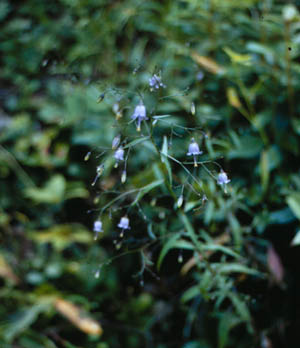
|
Author: Barrett Hardin |
||

Photograph courtesy of Univ. of Georgia Herbarium. Copyright Dept. of Botany, Univ. of Georgia, Athens. All rights reserved. Photographed using Kodachrome. Photographer unknown.
|
Table of Contents |
||
|
Common Names: |
||

|
Higher Taxa |
||
|
Description: (Cited from Wild Flowers of the United States by Harold William Ricket.) |
||
|
Authority |
||
|
Natural History: There is 14 week germination period for Campanula. The natural flowering period is June-September. The soil is most often well drained and gritty with a pH of 5.5 and 6.5. The fruit of campanula is found in a capsule which usually sheds its many seeds through pores in its sides. |
||
|
Campanula divaricata |
||
